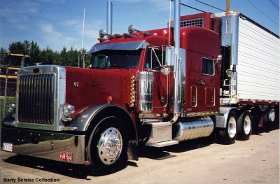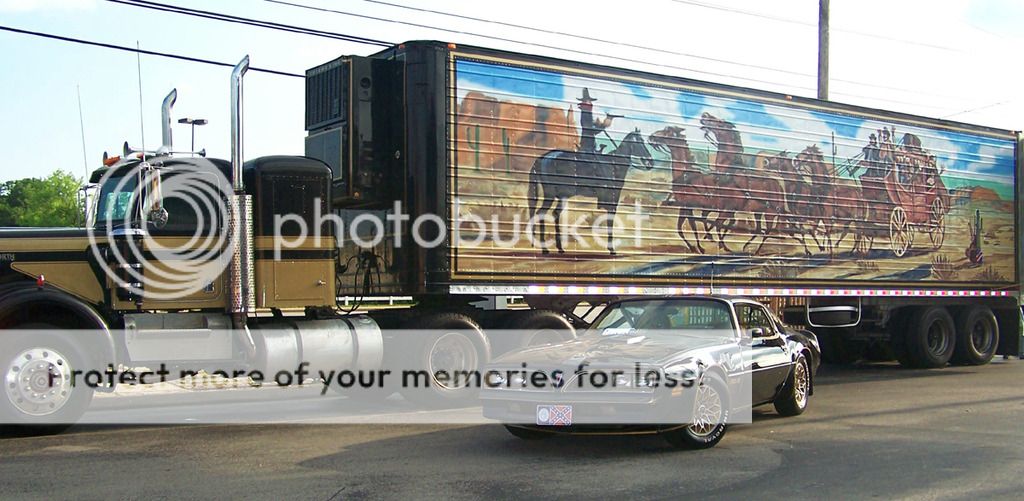Double Clutching Is Hard :(
Topic 14080 | Page 2
Much easier to learn having never driven a 4-wheeler stick shift.
Had to unlearn and relearn shifting. Almost walked the first time in a truck, because - hey, I'm a expert at EVERYTHING.
"I can run a supercharged corvette thru a sub 10-sec 1/4er mile - but I can't double-clutch to save my life".
I had to let that go, and open my mind.
I learned to float, and by the time the road test came up - I forgot how to double clutch - failed my first road test on shifting (23 missed shifts). Came back and passed the next day.
Let off the clutch SLOWLY - as in SLOWLY. When you feel it start to grab and move you forward, let off the brake - SLOWLY. It's like a ballet. After awhile - you'll be doing it subconsciously - without even thinking about it.
Rick
Double Clutch:
To engage and then disengage the clutch twice for every gear change.
When double clutching you will push in the clutch, take the gearshift out of gear, release the clutch, press the clutch in again, shift the gearshift into the next gear, then release the clutch.
This is done on standard transmissions which do not have synchronizers in them, like those found in almost all Class A trucks.
Michael, you have gotten advice from many people. They all had to start "somewhere", just like you're doing. Do not give up: in a few months you'll be here telling another newbie how you learned to double clutch!
Double Clutch:
To engage and then disengage the clutch twice for every gear change.
When double clutching you will push in the clutch, take the gearshift out of gear, release the clutch, press the clutch in again, shift the gearshift into the next gear, then release the clutch.
This is done on standard transmissions which do not have synchronizers in them, like those found in almost all Class A trucks.

In my daily drivers (car and truck), when on hill for example, I can release the clutch just enough to hold/not roll backwards. If needed, I can give a little gas for an even steeper hill... all the while holding clutch to the point just before full release. Not sure if this practice is good for the clutch, but regardless I do it all the time. Do big rig clutches handle/work the same way... or does the clutch work fundamentally different?
I think you are being roo hard on youraelf. The pint is you need to practice and learn. I know people who took 4 months to learn to downshift properly. Heck... I got my license in October and I still can't back to my satisfaction... which I'm told takes about 6 months for lots of people.
I did the same thing with the atalling. As a matter of fact.... I drove one truck for 3 weeks and solved that issue. We. I tested... I used a different t truck. Took me THREE times of testing to not stall on the test. The instructor was almost crying cause he was like "you got fewer points than anyone all week.. you are a great driver..but I gotta fail you for impeding traffic".
When you lift your foot off the clutch you will feel it "catch".... it sorta shakes the truck a bit. That is when you let off the brake more. Also remember the leveling of the road makes a difference. On inclines I start on 2 or even 1. And my trainer made me start in 1 until I learned to catch that clutch.
Keep it up... ir doing great

I completely understand the process of double clutching. I've driven stick all my life, and I've been reading that driving stick 4 wheelers can give you bad habits. So, I started double clutching in my car for practice. Obviously it's completely unnecessary, but why not practice. I have the motion down fast enough that it really doesn't add much time. Here's where I am confused...When I downshift in my car (driving normally), I am doing it for a reason. Either I need to accelerate quickly and therefore get the car out of the sluggish low RPM range, OR...I am trying to slow down and I'm using the higher RPM range to naturally bring my road speed down a little, and coupling it with the brakes. My wife hates it when I do that in her car, but she's never raced so she doesn't understand that it can give you more controlled braking. Anyhow, here's my question. In a car, you just downshift and let the RPMs do what they will. Why is it that in a semi you need to goose the gas pedal while downshifting? I realize that there are no synchro gears in semis but mechanically it seems unnecessary to use the gas pedal. By double clutching you are already lining up the front and rear of the tranny. It seems to me that at that point the engine should behave just fine without the mini boost of RPM that a tap on the gas pedal will provide. I'm unclear on that portion, but otherwise I think I got it.
Double Clutch:
To engage and then disengage the clutch twice for every gear change.
When double clutching you will push in the clutch, take the gearshift out of gear, release the clutch, press the clutch in again, shift the gearshift into the next gear, then release the clutch.
This is done on standard transmissions which do not have synchronizers in them, like those found in almost all Class A trucks.
Double Clutching:
To engage and then disengage the clutch twice for every gear change.
When double clutching you will push in the clutch, take the gearshift out of gear, release the clutch, press the clutch in again, shift the gearshift into the next gear, then release the clutch.
This is done on standard transmissions which do not have synchronizers in them, like those found in almost all Class A trucks.
OOS:
When a violation by either a driver or company is confirmed, an out-of-service order removes either the driver or the vehicle from the roadway until the violation is corrected.

Is it to keep from breaking traction? Sorry, I just thought of that, and it's the only thing that I can think would happen in my car if I dropped a gear and dumped the clutch.

Good news! I got the stalling problem under control. My stress level has dropped quite a bit lol. I almost got the shifting pattern down and missing far fewer gears. Now I need to focus on my pretrip more and polish up my backing some more. But I feel much more confident now.
New Reply:
New! Check out our help videos for a better understanding of our forum features

















Preview:
This topic has the following tags:
Advice For New Truck Drivers Becoming A Truck Driver Tips For Shifting Truck Driver Training Truck Equipment







 TT On Facebook
TT On Facebook
They require us to start on 3rd. I have been researching it and i think i figured it. I think i am releasing to much clutch before releasing the break. Essentially what I'm doing is that I'm releasing the clutch too much and let the truck have too much torque before releasing the brake. I think what I need to do is when I pull back on the clutch and start filling the torque I need to push the clutch back just a little to calm the truck and then release the brake and slowly release the clutch.